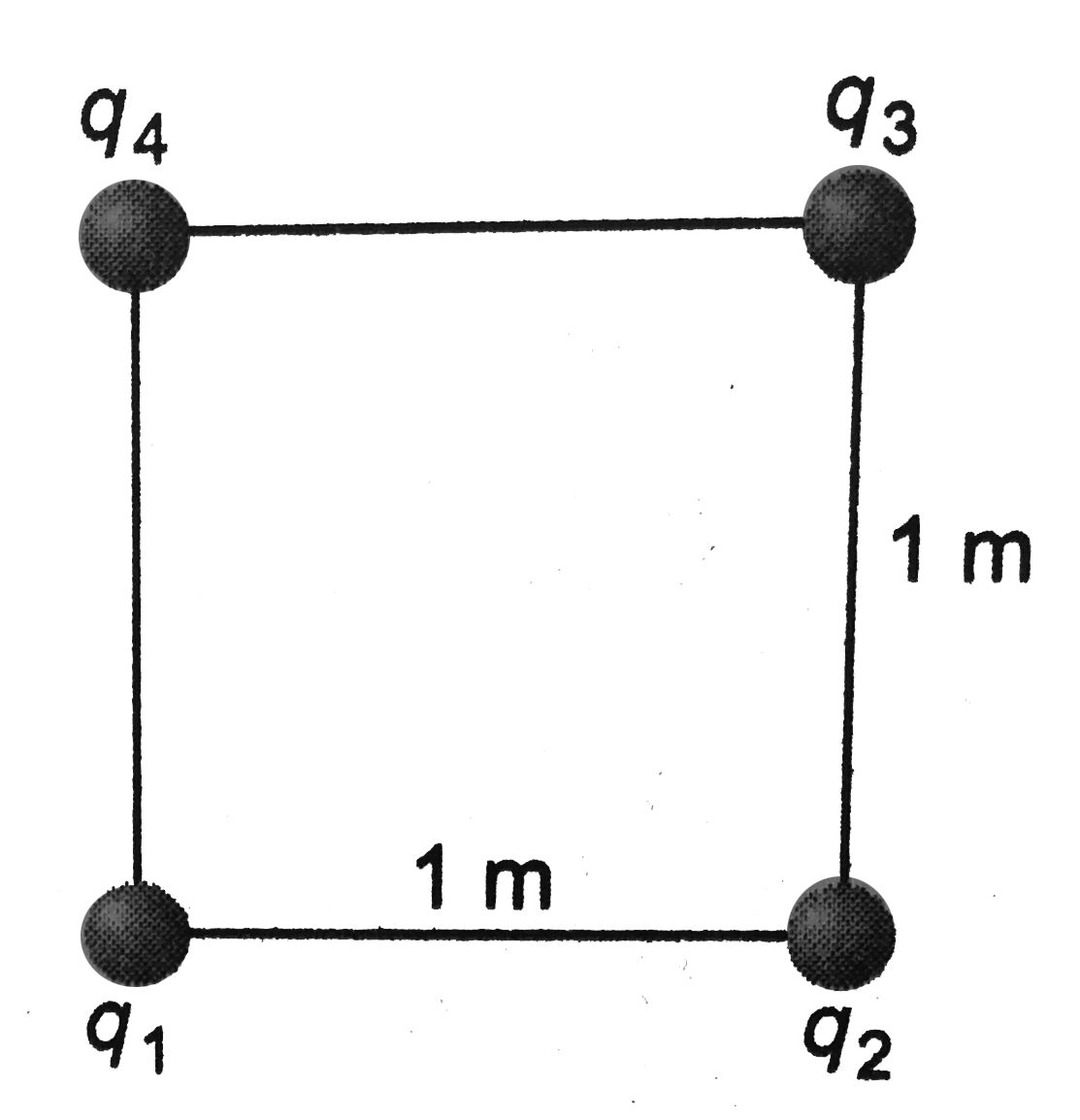Four point charges +1μC,+1μC,−1μCand−1μC are placed at the corners A,B,C and D of a square of each side 0.1 m (i) Calculate electric potential at the center O of the square (ii) If E is middle point of BC, what is work done in carrying an electron from O to E ?
In fig .

AB=BC=CD=DA=a=0.1m
BD=AC=√a2+a2=a√2
OA=OC=OB=OD=12a√2=a√2
Potential at 0, V0=14π∈0×
[1×10−6OA+1×10−6OB−1×10−6OC−1×10−6OD]
=10−64π∈0[1a/√2+1a/√2−1a/√2−1a/√2]
=0
Now, BE=CE=a/2
Again, AE=DE=√DC2+CE2
=√a2+(a/2)2=√5a24=a√52
Potential at E, VE=14π∈0×
[1×10−6AE+1×10−6BE+1×10−6CE+1×10−6DE]
=10−64π∈0[2a√5+2a−2a−2a√5]=0
Work done in carrying an electron of charge (−e) from O to E
W=−e[VE−V0]=−e[0−0]=zero.
Similar Questions
Four point charges, +0.2μC,+0.2μC,−0.2μCand−0.2μC are placed on vertices A, B, C and D, respectively of square ABCD of side a. Calculate the electric potential at the centre of the square.
View SolutionFour point charges of +1μc each are placed on the four corners of a square of side 1 m. Calculate the electric potential at the centre of the square.
View Solution
Knowledge Check
Electric charges of +10μC,+5μC,−3μCand+8μC are placed at the corners of a square of side √2 m, the potential at the centre of the square is
A1.8 VB1.8×106VC1.8×105VD1.8×104VFour charges of 6μC,2μC,−12μCand4μC are placed at the corners of a square of side 1m. The square is in x-y plane and its centre is at origin. Electric potential due to these charges is zero everywhere or the line
Ax=y,z=0Bz=0=zCx=0=yDx=z,y=0Electric charge of 1μC,−1μC and 2μC are placed in air at the corners A, B and C respectively of an equilateral triangle ABC having length of each side 10 cm. The resultant force on the charge at C is
A0.9 NB1. 8NC2.7 ND3.6 N
Four charges of same magnitude and same sign are placed at the corners of a square, of each side0⋅1m. What is electric field intensity at the center of the square?
View SolutionThree point charges 2μC,3μCand5μC are placed at the corners of an equilateral triangle of side 200 cm. Calculate the potentail energy of the system.
View SolutionThree charges −1μC,2μCand3νCare placed respectively at the corners A, B, C of an equiliateral triangle of sides 2m. Calculate the potential and electric field at the midpoint of the side BC.
View SolutionFour charges q1=1μC,q2=2μC,q3=−3μCandq4=4μC are kept on the vertices of a square of side 1m. Find the electric potential energy of this system of charges.

View SolutionFour charges q1=1μC,q2=2μC,q3=−3μC and q4=4μC are kept on the vertices of a square of side 1m. Find the electric potential energy of this system of charges.

View Solution
